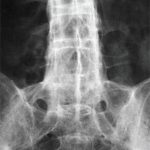In 1998, Dr. Helliwell and colleagues published an analysis of radiographs that further advanced the understanding of the differences between the radiological features of classical axial SpA and nonclassical axial SpA.4 However, he says not all rheumatologists acknowledge the different presentations of axial SpA, believing instead that patients either have axial involvement or they do not—the differences being merely quantitative.
Although Dr. Helliwell is convinced the presence of HLA-B27 drives phenotypic expression of disease, he points out that the Assessment of Spondyloarthritis International Society (ASAS) classification for axial SpA has a clinical arm requiring the presence of HLA- B27 and that patients with axial PsA are less likely to meet this criterion.5 Thus, the criteria may not be optimal for axial PsA.5
“This matters,” says Dr. Helliwell, “because in some countries, if you can’t get a diagnosis, you can’t get access to treatment.”
Dr. Helliwell believes the latest study continues to build the case that there are two phenotypes of axial disease—the classical and the non-classical—and that individuals with axial PsA are more likely to have the non-classical phenotype. He also hopes the study paves the way for patients with PsA to access drugs that are effective for axial involvement. He points to the currently enrolling study of the interleukin 23 inhibitor guselkumab administered subcutaneously in biologic-naive participants with active axial PsA (NCT04929210) and believes this study, as well as the ASAS and the Group for Research and Assessment of Psoriasis and Psoriatic Arthritis (GRAPPA) collaboration to define new classification criteria for axial PsA (NCT04434885), will help in the development of better classification criteria for axial SpA.
Lara C. Pullen, PhD, is a medical writer based in the Chicago area.
References
- Coates LC, Baraliakos X, Blanco FJ, et al. The phenotype of axial spondyloarthritis: Is it dependent on HLA-B27 status? Arthritis Care Res (Hoboken). 2021 Jun;73(6):856–860.
- Feld J, Chandran V, Haroon N, et al. Axial disease in psoriatic arthritis and ankylosing spondylitis: a critical comparison. Nat Rev Rheumatol. 2018 Jun;14(6):363–371
- McEwen C, DiTata D, Lingg C, et al. Ankylosing spondylitis and spondylitis accompanying ulcerative colitis, regional enteritis, psoriasis and Reiter’s Disease: A comparative study. Arthritis Rheum. 1971 May–Jun;14(3):291–318.
- Helliwell PS, Hickling P, Wright V. Do the radiological changes of classic ankylosing spondylitis differ from the changes found in the spondylitis associated with inflammatory bowel disease, psoriasis, and reactive arthritis? Ann Rheum Dis. 1998 Mar;57(3):135–140.
- Rudwaleit M, Landewe R, van der Heijde D, et al. The development of Assessment of Spondyloarthritis International Society classification criteria for axial spondyloarthritis (part I): Classification of paper patients by expert opinion including uncertainty appraisal. Ann Rheum Dis. 2009 Jun;68(6):770–776.


